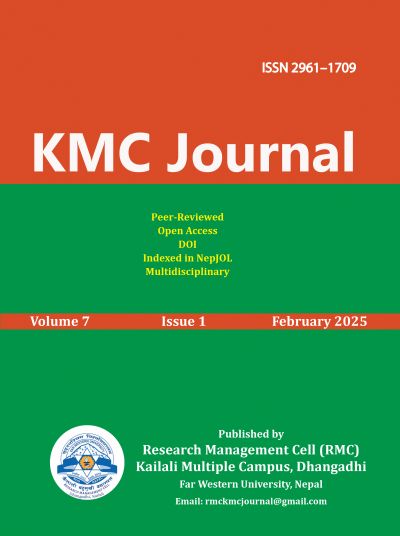Teachers’ Beliefs on Executing English Medium Instruction Policy in Community Schools
DOI:
https://doi.org/10.3126/kmcj.v7i1.75117Keywords:
EMI policy, global language, students’ enrollment, multilingual beliefsAbstract
Community schools introduce English medium instruction (EMI) policy due to the growing influence of the English language in Nepal. This study aimed to explore teachers’ beliefs in employing EMI policy in community schools. Using a qualitative ethnographic research design, the experiences of three Grade VI-VIII teachers from three EMI community schools in Sindhuli district were explored. Data were collected through in-depth interviews, observation and writing field notes. Interviews were audio-recorded, recorded data was transcribed assigning codes, codes were developed into categories and main themes were derived in terms of the categories. In order to analyze the data, we followed the six phases of thematic analysis suggested by Braun and Clarke (2006). The findings reveal that the adoption of EMI policy in community schools is influenced by the ideology of English as a global language. The study also highlights that EMI is implemented as a strategy to retain student enrollment in community schools and curb the migration of students to private schools. Furthermore, it uncovers that teachers have developed multilingual beliefs and advocate for multilingual pedagogy as a more suitable approach for multicultural classroom contexts. The study recommends fostering multilingual awareness among teachers to support the development of a multilingual medium of instruction policy rather than relying solely on EMI in community schools.
Downloads
Downloads
Published
How to Cite
Issue
Section
License

This work is licensed under a Creative Commons Attribution-NonCommercial 4.0 International License.
This license allows reusers to distribute, remix, adapt, and build upon the material in any medium or format for noncommercial purposes only, and only so long as attribution is given to the creator.




